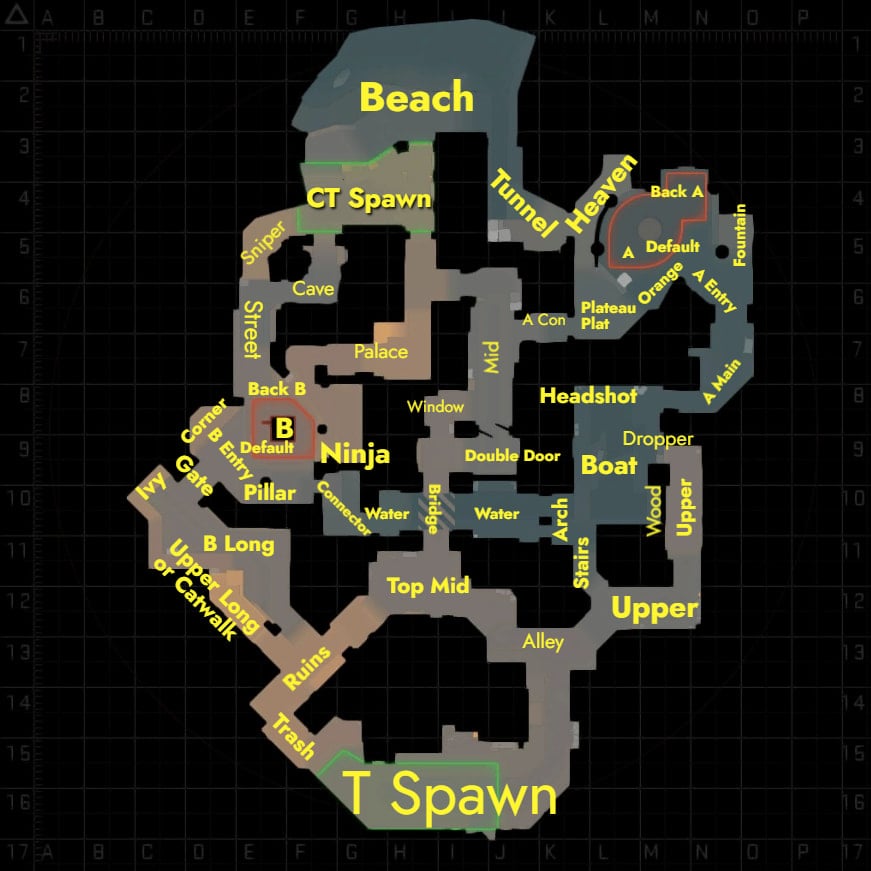365 Days of Insight
Your daily source for news, tips, and perspectives.
Where to Hide and Seek: Crafting Your CS2 Callout Strategy
Master the art of hiding and seeking in CS2! Discover clever callout strategies to elevate your gameplay and outsmart your opponents.
Top Callout Strategies for Mastering CS2: Elevate Your Game
In Counter-Strike 2 (CS2), mastering callout strategies is essential for enhancing team communication and improving overall performance in matches. Here are some key techniques to elevate your game:
- Prioritize Clarity: Use clear and concise callouts that are easily understood by all team members.
- Establish a Common Vocabulary: Agree on specific terms for various locations, ensuring everyone refers to spots the same way.
- Utilize Visual Aids: Consider sharing maps with marked locations to familiarize yourself and your team with important areas.
Additionally, practice makes perfect. Regularly engage in drills where players focus solely on making callouts during gameplay. This can enhance reaction times and ensure that vital information is communicated swiftly. Remember, the more effective callouts your team employs, the higher the chance of securing victories. Integrating these callout strategies into your gameplay will not only elevate your personal skills but also foster a more coordinated team environment.

Counter-Strike is a highly competitive first-person shooter game that has captured the attention of gamers worldwide. Many players seek to improve their gameplay by finding the best configurations, including ropz settings. The game requires teamwork, strategy, and precise aim, making it a staple in the esports community.
Essential Hiding Spots in CS2: Where to Look and Where to Hide
In CS2, mastering the art of hiding is just as crucial as being an effective shooter. Knowing the map layouts and effective hiding spots can give you a significant advantage over your opponents. Some essential spots include:
- Closets and dark corners: These spots are often overlooked but can provide critical cover during intense firefights.
- Behind boxes and crates: Utilize the environment to your advantage by hiding behind objects that players are less likely to check.
- Rooftops and ledges: While not conventional hiding spots, these elevated areas can allow for strategic ambushes.
When searching for where to hide, consider the typical pathways your enemies might take. Awareness of their usual routes can help you effectively plan your concealment. Remember to change your spots frequently to avoid predictability. Additionally, always keep an eye out for alternative hiding spots that may not be immediately obvious:
- Use shadows to your advantage; dark areas can make you nearly invisible when shrouded.
- Look for potential decoy spots where you can fake a presence and lead opponents into traps.
How to Create Effective Map Callouts in CS2 for Team Success
Creating effective map callouts in CS2 is crucial for enhancing team communication and overall success in gameplay. To start, it’s essential to use clear and concise terminology that everyone on the team can understand. Avoid using vague terms like 'by the box' or 'over there.' Instead, implement a structured naming convention for different areas of the map. For instance, refer to key locations with specific names, such as 'Upper B' or 'Mid Ramp.' This practice not only minimizes confusion but also ensures your teammates can react quickly and effectively to enemy movements.
Additionally, consider incorporating visual aids to support verbal communication during matches. Utilizing tools like map overlays can help pin down important locations for callouts, making it easier for new players to familiarize themselves with the map. You might also create a list of common callouts and share it with your team, either through a shared document or as a pinned message in your team's chat. This collaborative effort will lead to more coherent strategies, allowing your team to execute plans with precision and agility.